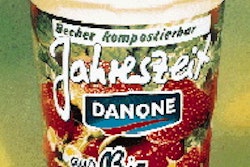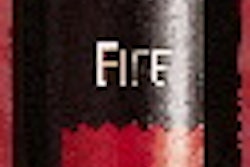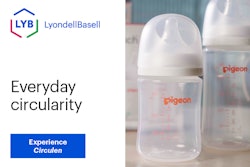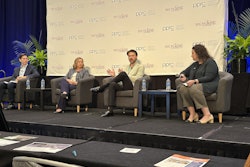The Federal Trade Commission (FTC) decided to turn back from a proposal to change its "Made in the USA" label requirement from the current "all, or virtually all" of the product being made in America to "substantially all." Consumer groups, labor unions and some companies and trade associations reacted with anger to the FTC's proposal (see Packaging World, July '96, p. 24). Other companies and trade groups supported the change, which the FTC began to consider after a running shoe manufacturer complained about an enforcement action against them. The shoes in question were made with outer soles from China, but still carried a "Made in the USA" label. To accommodate those situations, the FTC proposed allowing the "Made" label on any product whose final assembly was done in the U.S. and whose U.S. manufacturing costs were at least 75% of the total manufacturing costs. When the FTC announced in December it was ditching that proposal, it admitted the public outcry against the 75% standard had a lot of merit. But the agency declined to say what percentage it would look for when applying the "virtually all" standard, which has been used for 50 years. "No single percentage standard will be appropriate for all products in all circumstances," the Commission said. The FTC will expect "Made" labels to be applied only to products with an "extremely high" U.S. manufacturing content. Final processing will have to be in the U.S., where the product must also undergo "substantial transformation." This means that imported products required by the U.S. Customs Service to be labeled with a foreign country-of-origin label could not qualify for a "Made" label. When judging how much foreign content is acceptable, the FTC will consider how far removed from the finished product foreign parts or materials are. So, for example, plastic packaging converted in the U.S. from some imported resin would probably be allowed to carry the "Made in the USA" label. Companies will be able to use qualified claims, as they currently can. An "Assembled in the USA" label will have to be backed up with evidence that the product has undergone its principal assembly here and has had its last substantial transformation here.
FTC to keep domestic content high for 'Made in the USA' label claim
To use the legend "Made in the USA" on a label, companies will have to perform final assembly in the U.S., and an "extremely high" percentage of manufacturing content will have to be American.
Jan 31, 1998
Machinery Basics
Conveyor setup secrets from top CPG manufacturers
7 proven steps to eliminate downtime and boost packaging line efficiency. Free expert playbook reveals maintenance, sequencing, and handling strategies.
Read More
Annual Outlook Report: Sustainability
The road ahead for CPGs in 2025 and beyond—Packaging World editors review key findings from a survey of 88 brand owners, CPG, and FMCG readers.
Download Now























